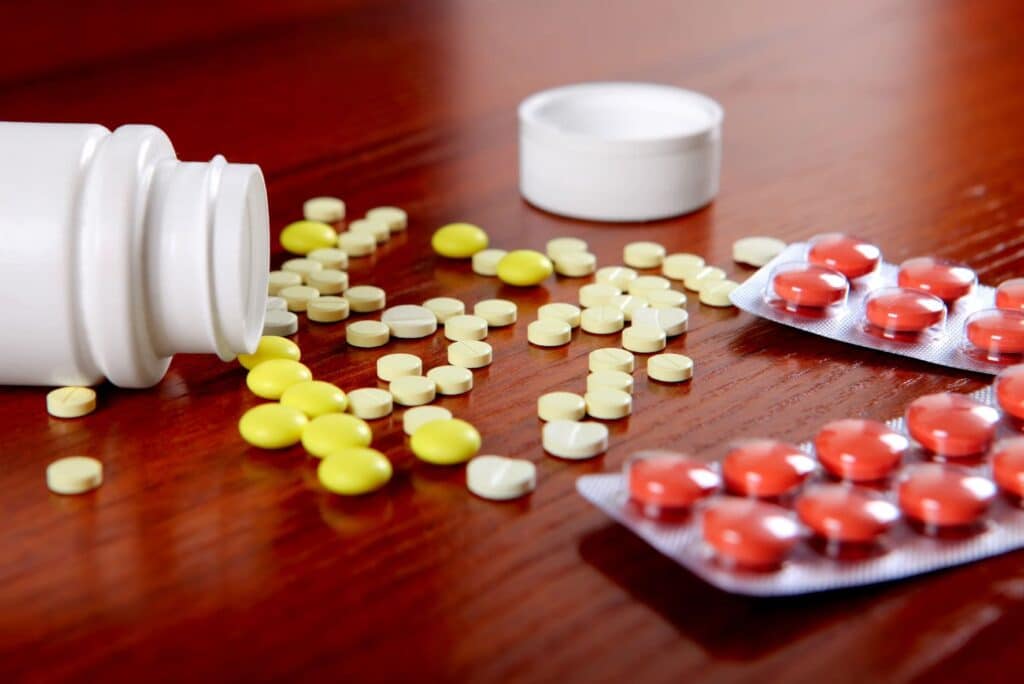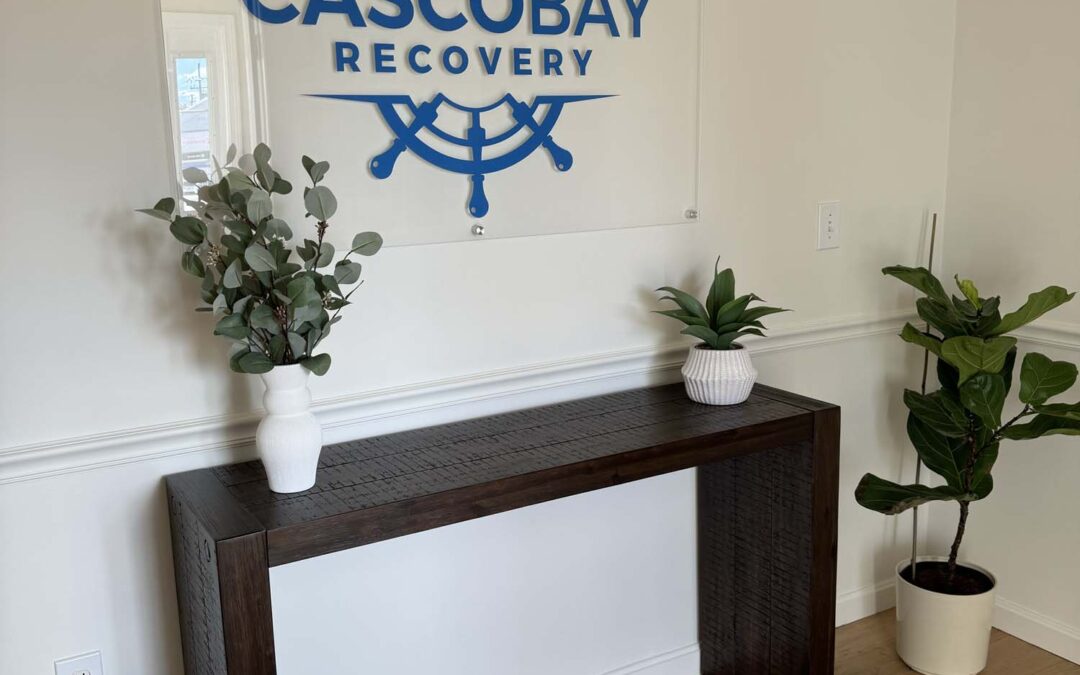Opiate potentiators are herbs, substances, or drugs that strengthen the effects of an opioid. The use of an opiate potentiator goes back to the 1600s when the following was reported:
Morphine was combined with alcohol and cocaine to intensify the effects of an opioid.
Today, opioid potentiators are aggravating opioid abuse issues. Sometimes, however, opiate potentiators are used to intensify the effects of opiates. An opiate potentiator is a herb, chemical, or drug used to increase the impact of a substance.
What Are Opioids?
Opioids are a class of drugs naturally discovered in the opium poppy plant; it works in the brain by producing several effects. These medications are referred to as painkillers, or they can also be called street drugs, such as heroin.
The most form of drugs is opioids. They are utilized for pain relief and prescribed by doctors often. Some forms of opioids are hydrocodone, morphine, and oxycodone. One illegal type of opiate is Heroin, and the abuse is rampant.
According to the 2020 NSDUH, among individuals 12 or older in 2020, 3.4% or 9.5 million individuals misused opioids in the past year. Among the 9.5 million individuals who misused opioids in 2020, 9.3 million individuals misused prescription pain relievers. About 902,000 individuals used heroin.
Several prescription opioids are used to block pain signals between the body and brain. These opioids are prescribed to treat moderate to severe pain.
In addition to controlling a person’s pain, opioids can also make a person feel happy, “high”, or relaxed. Opioids can be addictive. Side effects include constipation, nausea, slowed breathing, drowsiness, and confusion.
Sometimes, opioids are classified as narcotics, and even though they relieve pain, they don’t fall into the same category as over-the-counter painkillers such as Tylenol and aspirin. The most commonly used opioids are:
- Fentanyl, a synthetic opioid that is 50-100 times more potent than morphine
- Prescription opioids such as Vicodin and OxyContin
- Heroin, an illegal drug
Different Types of Opiate Potentiators
Opiate Potentiator Group
Antihistamines (Antagonists)
- Diphenhydramine (Benadryl)
- Doxylamine succinate
- Chlorpheniramine
- Promethazine
- Cyclizine
H2 Antagonists
- Cimetidine
Completely inhibit histamine by binding to histamine H2 receptors. It also blocks the activity of cytochrome P450, which might explain the proposals for its use as an opiate potentiator.
CYP Enzymes Inhibitors
- Grapefruit Juice
Grapefruit contains compounds known as furanocoumarins that can block the CYP3A4 enzymes.
NMDA Antagonists
DMX (Dextromethorphan)
DMX is a nonselective serotonin reuptake inhibitor and a sigma-1 receptor antagonist as an NMDA receptor. This produces effects that are similar to phencyclidine and ketamine. The active metabolite is 3-methoxymorphinan; it is local anesthetic effects in animal versions with potency above dextrorphan, but this is below dextromethorphan.
Magnesium Sulfate
This is an uncertain mechanism of action. It inhibits the NMDA receptors that are limiting the effect of excitotoxic neurotransmitters like glutamate and increasing the seizure threshold. Magnesium can cause cerebral vasodilation and it can decrease cerebral ischemia. It’s a smooth muscle relaxant.
Memantine
It blocks the effects of glutamate, which is a neurotransmitter in the brain that can lead to an overstimulation of neurons and neural excitability.
Muscle-Relaxants
Magnesium
This acts by binding and lowering the overall activity of NDMA receptors by blocking calcium channels paired with receptors. It lowers substance P synthesis and potentiates morphine action at the dorsal horn in the presynaptic region. This can result in an increased action of morphine when coadministered with magnesium.
Orphenadrine
It appears to block muscarinic acetylcholine receptors with NMDA receptors in the CNS.
Cyclobenzaprine
This is a centrally acting skeletal muscle relaxant.
Carisoprodol
It is a centrally acting skeletal muscle relaxant that doesn’t instantly relax skeletal muscles. A metabolite of meprobamate, carisoprodol, both has sedative and anxiolytic properties.
Baclofen
On the other hand, this one acts as an antagonist at the GABA receptor. It overlaps in expression with other opioids. By binding to this specific receptor, the drug produces a synergy that is in action with opioids due to potentiation of the hypnotic and analgesic opioid effects.
Antimalarial Medications
Quinine
Quinine inhibits protein synthesis, nucleic acid synthesis, and glycolysis in plasmodium falciparum. This can bind with hemozoin in several parasitized erythrocytes. However, an accurate mechanism of antimalarial activity of quinine sulfate isn’t understood completely.
CCK-Inhibitors
Proglumide
CCK-a and CCK-b inhibitors enhance the analgesia produced by the opioid drugs that can prevent or even reverse the tolerance to opioid drug development.
Opiate Receptor Agents
Loperamide
An antagonist at mu-opioid receptors slows down gut motility. The poor CNS penetration is low addictive potential in therapeutic doses.
Propoxyphene
Propoxyphene acts as a mu-opioid receptor agonist, noncompetitive neuronal nicotinic acetylcholine receptor antagonist, and weak serotonin reuptake inhibitor.
DMX (Dextromethorphan)
It is a weak opioid like codeine. It is known to cause dependency among several opioid users.
Other CNS Medications
Clonidine
This is an alpha 2 agonist. It can block the sympathetic outflow of norepinephrine through stimulation of alpha 2 receptors in the individual’s brain resulting in sympathetic tone reduction.
Benzodiazepines
It can facilitate GABA action by increasing the frequency of CI channel opening.
Clomipramine
TCA antidepressant
Barbiturates
They bind to the GABA receptor complex and decrease the rate of GABA dissociation.
Stimulants
Dextroamphetamine can induce the release of dopamine within the mesocorticolimbic system. It is a major element of the brain reward system. It results in behavioral and measurable changes such as euphoria. Methylphenidate can block the dopamine transporter. In turn, causing an increase in dopamine concentration at the synapse.
COX Inhibitors – Naproxen
It reversely inhibits cyclooxygenase-1 and 2 (COX-1 and 2) enzymes, which can result in a decreased formation of prostaglandin precursors.

Opioids Combined With Potentiators
Overall, the use of potentiators aggravates the opiate abuse issue. For thousands of years, individuals have combined substances to attain a greater “high”. According to Pain Community Centre, it goes as far back as the 1600s. Morphine was sometimes combined with cocaine and alcohol to strengthen morphine’s opiate effects.
Today, several individuals attempt to combine opiate-based substances with various other substances to maximize the eutrophic effects. When a person combines opiate drugs with several other substances or medications with various risks, potential interactions can occur.
Even with harmful daily substances, unintended consequences might arise at any time, and combining substances can increase overdose potential. Several unintended overdoses have happened due to opiates across the United States.
How Opioid Addiction is Impacting the US
Opioid addiction is serious. An estimated 1.6 million individuals aged 12 or older had an opioid use disorder. Approximately, 2.1 million Americans have an (OUD) opioid use disorder.
Furthermore, roughly 130 Americans die every day from an opioid overdose. To expand on that, about 5% of individuals with opioid use disorder will try heroin. About 20% to 30% of individuals who engage in prescription opioids misuse them.
In addition, about 10% of individuals who misuse prescription opioids become addicted to opioids. Overall, drug overdose deaths rose from 2019 to 2020 with 91,779 drug overdose deaths reported in 2020. The deaths that involve synthetic opioids other than methadone (essentially fentanyl), continued to rise with about 56, 516 overdose deaths in 2020.
Negative Effects of Combining Opioid Potentiators
The consequences of abusing opioid potentiators are the following:
Dependence: According to the National Institute on Drug Abuse, dependence is how a person’s body adapts to chronic drug exposure. So, whether or not an individual gets addicted, they can experience withdrawal symptoms such as restlessness, insomnia, diarrhea, vomiting, muscle or bone pain, cold flashes, or involuntary movements.
Addiction: People who are addicted to a substance aren’t able to abstain from engaging in use. These individuals have no behavioral control, might not be able to recognize the relationships and behaviors that have been affected, and gives into cravings regularly.
Addiction affects a person’s motivation and brain’s reward system. Even after a remission period, individuals might experience relapse with exposure to the substance in their environment or due to stress.
Brain Damage: Slowed breathing can result from opioid overdose and have long-lasting impacts on the brain. Hypoxia, a lack of oxygen to the brain, can trigger neurological and psychological issues. Some individuals might lapse into a coma. It’s vital to understand that permanent damage is an extreme possibility.
Long-Term Consequences: If individuals take opiates for a lengthy period, they can experience symptoms such as abdominal bloating, nausea and vomiting, and constipation. More serious issues can include liver damage.
Personal Impact: Individuals might withdraw from society, and their behaviors might change with long-term opiate use. In turn, negative profound results on familial, personal, and career relationships can occur. As a result, legal and criminal consequences can occur.
Several opiate potentiators can increase then raise overdose risks. According to American Family Physician, antihistamines can relieve some side effects of opiates.
However, mixing the two in higher dosages can worsen respiratory depression. When an opiate potentiator is combined, it can lead to numerous unknown and unpredictable side effects.
Opioid Addiction Treatment Options

Numerous effective treatment options can assist with opioid addiction. The gold standard is medications that can reduce cravings and the risk of a deadly overdose. In addition to medication, therapy, support groups, and treatments can assist patients in achieving sobriety.
Medications
Medication-assisted treatment, also known as (MAT) can assist individuals in opiate rehab. The following medications are used often in MAT.
Methadone
Methadone relieves withdrawal symptoms and can help during detox. Also, it can be used as a long-term maintenance medication and decreased at a slow pace over time.
Buprenorphine
Buprenorphine, known as Subutex, can be used for long-term maintenance. It is also combined with Naloxone to help with dependence and misuse.
Naltrexone
Naltrexone can help with preventing relapse. However, it can cause a severe and sudden withdrawal if used when opioids are still in the system.
Detox
The beginning of opioid use disorder treatment is detox. A detox is a medically controlled and supervised withdrawal process from the drug. Detox can’t be the solution to addiction on its own. Many individuals resort back to addiction when they don’t attend opioid rehab.
The severity of opioid withdrawal symptoms depends on the speed and dose. There isn’t a single method that is guaranteed to work for every patient. A heroin addict will switch to synthetic methadone while in detox.
After the switch occurs, such addicts taper off the medication or drug use. Likewise, individuals might use clonidine to shorten the withdrawal time and relieve physical symptoms.
Rehab
Most individuals require long-lasting treatment after opioid detox. The long-term opioid treatment options include the following:
Residential Treatment
Patients live full-time at our treatment facilities.
Partial Hospitalization Program (PHP)
Patients will spend 5-7 days at the treatment facility and go home in the evenings.
Intensive Outpatient Program (IOP)
An intensive outpatient program allows patients to live at home while attending the treatment sessions at our facilities 3-5 days per week.
Outpatient Program (OP)
An outpatient program provides similar types of treatment as more intense programs but with fewer time requirements. This treatment can be a continuous option after a higher level of care has been completed.
Treatment Therapies
The most effective form of therapy for opioid addiction is behavioral therapy. The options are:
Cognitive Behavioral Therapy (CBT)
CBT is effective in helping individuals to identify any form of faulty thinking that has caused negative behavior. It is also effective in preventing chronic relapse.
Dialectical Behavioral Therapy (DBT)
DBT is a form of CBT. However, it focuses more on building relationships and emotional regulation.
Family Therapy
When one member of a family unit has an addiction, the entire family is affected. As a result, it’s essential to address the family relationships with the family members.
Holistic Therapy
Holistic therapy provides patients with substantial experiences that treat the entire person. So, this includes the mind, body, and spirit.
Opiate Potentiators Addictions Conquered at Casco Bay
If you or a loved one is struggling with opioid addiction, you can find help at our opiate rehab today. Our state-of-the-art facility is located in Portland, Maine, and provides numerous levels of care like dual diagnosis treatment. Contact us today to break free from opioid addiction.








